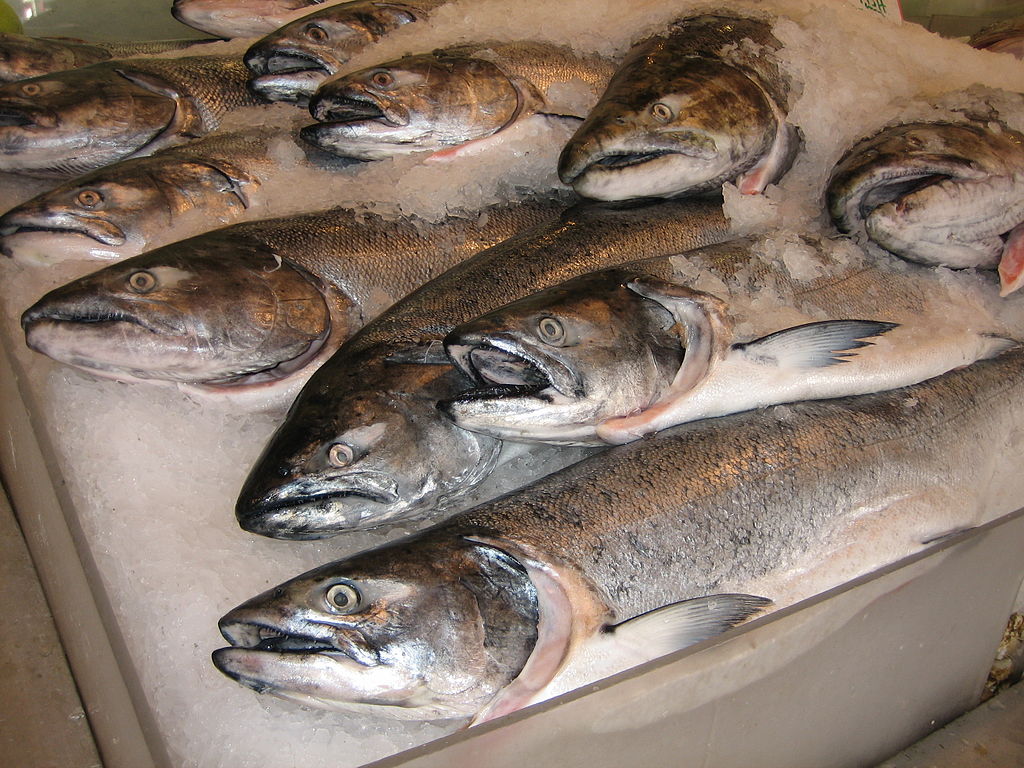Parasitic ‘Salmon Lice’ Are Taking Out Huge Swaths Of Global Salmon Supply

A parasite known as the “salmon lice” is causing major problems for the industry. It can take approximately a twelfth of the salmon yield in a single year, leading to a massive billion-dollar loss that’s driving up prices and has fish farmers and scientists concerned.

Photo: Fawcett5 on Wikimedia Commons.
Salmon lice have been around for as long as the fish themselves, according to Alaska’s Department of Fish and Game. However, reports of them being problematic to the industry have only begun to surface over the past year. These parasites can latch onto juvenile salmon at an early age. As they grow, they gain the ability to move in the salmon’s body and can feed on its mucus, blood, and skin, potentially killing the fish as a result.

Salmon lice in various stages of life. Photo: Thomas Bjorkan, Wikimedia Commons
The reason these lice have become a problem now is that wild juvenile fish can swim close by adult salmon farms. The farming pens are a perfect breeding ground for lice, which can then leave the pens and attach to nearby fish. Wild salmon close to fish farms are 73 times more likely to contract this parasite, and farms can elevate the risk of parasitism for fish up to 40 miles away.
In the past, aquaculture and wild fish have been able to deal with the lice on their own. Farms, however, began reporting the problem as early as 1994, according to the Associated Press. A pesticide was used to control their growth, but resistance to the lice killer of choice developed amongst the parasites in 2009. As these pesticide-resistant lice have spread worldwide over the years, looking into treatments for them have become paramount.

Salmon lice attached to a fish. Photo: 7Barrym0re on Wikimedia Commons.
While wild fish are definitely more at risk, salmon farms themselves are hurting too. The lice can easily fester in the juvenile salmon pens of these farms, leading to massive losses that can amount to approximately $1 billion, according to Fish Farmer Magazine. Considering that the UN’s Food and Agricultural Organization (FAO) has estimated the salmon industry to be worth approximately $12 billion, which is a significant chunk of business.
For those of you worried about eating these lice, fish who have them are completely edible. It’s when they’re killed off before having a chance to grow into adults that makes it an issue.
Currently, treatments like warm water baths, underwater lasers, and breeding for genetic resistance are being explored by experts. The major goal is to ensure that farmers have tools that can effectively deal with these lice. Considering ten percent of the world’s salmon supply were lost to this parasite last year, we need these treatments sooner rather than later.






















